Related Research Articles

Mickey Mouse is an animated cartoon character co-created in 1928 by Walt Disney and Ub Iwerks. The longtime mascot of The Walt Disney Company, Mickey is an anthropomorphic mouse who typically wears red shorts, large yellow shoes, and white gloves. Taking inspiration from silent film personalities such as Charlie Chaplin's Tramp, Mickey is traditionally characterized as a sympathetic underdog who gets by on pluck and ingenuity. The character’s status as a small mouse is personified through his diminutive stature and falsetto voice, the latter of which was originally provided by Disney. Mickey is one of the world's most recognizable and universally acclaimed fictional characters of all time.

Arthur Floyd Gottfredson was an American cartoonist best known for his defining work on the Mickey Mouse comic strip, which he worked on from 1930 until his retirement in 1975. His contribution to Mickey Mouse comics is comparable to Carl Barks's on the Donald Duck comics. 17 years after his death, his memory was honored with the Disney Legends award in 2003 and induction into the Comic Book Hall of Fame in 2006.
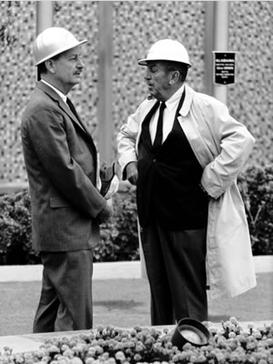
John Hench was an American artist, designer and director at The Walt Disney Company. For 65 years, he helped design and develop various Disney attractions and theme parks.
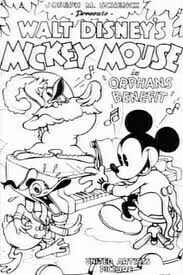
Orphan's Benefit is an American animated short film produced by Walt Disney Productions in black-and-white. It was first released in 1934 and was later remade in Technicolor in 1941 under the corrected title Orphans' Benefit. The cartoon features Mickey Mouse and his friends putting on a vaudeville-style benefit show for a group of unruly orphans. It contains a number of firsts for Disney, including the first time in which Mickey Mouse and Donald Duck appear together, and it was the 68th Mickey Mouse short film to be released, and the sixth of that year. It was also the cartoon which had the first story to be written that featured Donald Duck, though it was the second Donald Duck short to be produced and released, after The Wise Little Hen.
Walt Disney Records is an American record label of the Disney Music Group. The label releases soundtrack albums from The Walt Disney Company's motion picture studios, television series, theme parks, and traditional studio albums produced by its roster of pop, teen pop, and country artists.
The Mickey Mouse Theater of the Air was a 1938 musical-variety radio series for children, sponsored by Pepsodent and heard on NBC on Sunday afternoons, featuring Mickey Mouse and other characters from Walt Disney cartoons. There were a total of twenty broadcasts from the Disney Little Theater on the RKO lot from January 2 to May 15, 1938, the program was created to promote the February 1938 release of Disney's first animated feature film, Snow White and the Seven Dwarfs. In addition to Snow White featured in the second episode, the series featured other fairy tale and nursery rhyme characters, including "Mother Goose Land," "Cinderella," "King Neptune," "The Pied Piper," "The Old Woman in the Shoe" and "Old MacDonald".

Andreas Deja is a Polish-born German-American character animator, most noted for his work at Walt Disney Animation Studios. Deja's work includes serving as supervising animator on characters in several Disney animated films, including the Disney villains Gaston in Beauty and the Beast, Jafar in Aladdin, and Scar in The Lion King, the titular character in Hercules, and Lilo Pelekai in Lilo & Stitch.
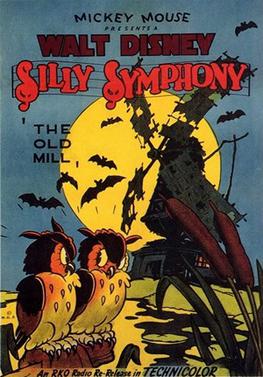
The Old Mill is a 1937 Silly Symphonies cartoon produced by Walt Disney Productions, directed by Wilfred Jackson, scored by Leigh Harline, and released theatrically to theatres by RKO Radio Pictures on November 5, 1937. The film depicts the natural community of animals populating an old abandoned windmill in the country, and how they deal with a severe summer thunderstorm that nearly destroys their habitat. It incorporates the song "One Day When We Were Young" from Johann Strauss II's operetta The Gypsy Baron.

Mickey Mouse is a series of American animated comedy short films produced by Walt Disney Productions. The series started in 1928 with Plane Crazy and ended in 1953 with The Simple Things. Four additional shorts were released between 1983 and 2013. The series is notable for its innovation with sound synchronization and character animation, and also introduced well-known characters such as Mickey Mouse, Minnie Mouse, Pluto and Goofy.
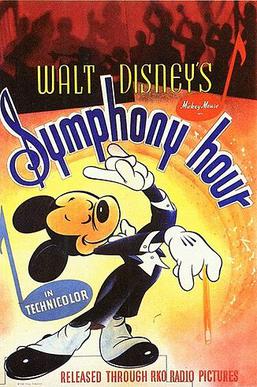
Symphony Hour is a 1942 American animated short film produced by Walt Disney Productions and released by RKO Radio Pictures. The cartoon depicts Mickey Mouse conducting a symphony orchestra sponsored by Pete. The film was directed by Riley Thomson and features music adapted from the "Light Cavalry Overture" by Franz von Suppé. The voice cast includes Walt Disney as Mickey, Billy Bletcher as Pete, and John McLeish as a radio announcer. It was the 117th short in the Mickey Mouse film series to be released, and the second for that year.
Don Towsley was an animator working at Walt Disney Animation Studios, and later at MGM and Filmation.
Burnett "Burny" Mattinson was an American animator, director, producer, and story artist for Walt Disney Animation Studios, where he had been employed since 1953.
Edward H. Love was an American animator who worked at various studios during the Golden age of American animation. He is well known for animating Walt Disney Animations' shorts Mickey's Trailer and Fantasia. Love won the Golden Award at the 1984 Motion Pictures Screen Cartoonists Awards in 1984.
Percival C. Pearce was an American producer, director, and writer, best known for his work with Walt Disney Productions.
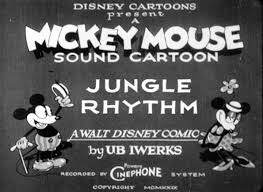
Jungle Rhythm is a Mickey Mouse short animated film first released on November 15, 1929, as part of the Mickey Mouse film series. It was the thirteenth Mickey Mouse short to be produced, the tenth of that year.
Herman "Kay" Kamen was an American merchandising executive, noted primarily for his work with the Walt Disney Company. He promoted Mickey Mouse – the most popular cartoon character of the early 1930s.
Ruth Irene Tompson was an American camera technician, animation checker and supercentenarian. She was known for her work on animated features at The Walt Disney Company and was declared a Disney Legend in 2000.

Sylvia Holland was a British-born concept artist, illustrator, and the second woman to become a storyboard artist for Walt Disney Productions. She worked for Disney in the 1930s and 1940s and is especially known for her work on the 1940 film Fantasia.
Hazel Mae Sewell, later Cottrell, was American animator and the first head of Walt Disney Studio's Ink and Paint Department.
Helen Ogger was an American inker and cartoonist who worked for Walt Disney Studio's Ink and Paint Department throughout the 1930s. She is known for her work on Snow White and the Seven Dwarfs, as she was the only one who could apply the dye that became Snow White's blush.
References
- 1 2 Don Rayno (19 December 2012). Paul Whiteman: Pioneer in American Music, 1930-1967. Scarecrow Press. pp. 483–. ISBN 978-0-8108-8322-2.
- ↑ John Dunning (19 March 1998). On the Air: The Encyclopedia of Old-Time Radio . Oxford University Press. pp. 432–. ISBN 978-0-19-984045-8.
- ↑ Didier Ghez (8 August 2012). Walt's People: Talking Disney With the Artists Who Knew Him. Xlibris Corporation. pp. 1900–. ISBN 978-1-4771-4790-0.
- ↑ Didier Ghez (8 August 2012). Walt's People: Talking Disney With the Artists Who Knew Him. Xlibris Corporation. pp. 1897–. ISBN 978-1-4771-4790-0.
- ↑ The American Harp Journal. American Harp Society. 1981.
- ↑ Frank Harvey Colby (1940). The Pacific Coast Musician. Colby and Pryibil.
- ↑ Jocelyn Faris (1 January 1994). Ginger Rogers: A Bio-bibliography. Greenwood Publishing Group. pp. 163–. ISBN 978-0-313-29177-7.
- ↑ "The Mickey Mouse Musician"